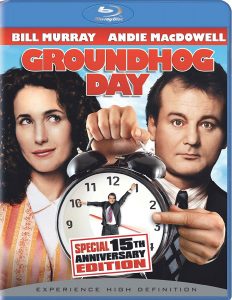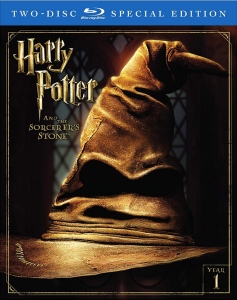It’s been 17 years since the cinematic birth of “Harry Potter,” meaning the film series is now old enough to do something Harry, Ron and Hermione never did – graduate from Hogwarts! To celebrate this saga of nine films and counting – with a 10th (“Fantastic Beasts: The Crimes of Grindelwald”) coming this year — let’s take a look back at what’s come so far. (And if you’d like to follow along, a marathon starts at 9 a.m. Jan. 1 on HBO, and the films are also available via HBO Go.) We start, naturally, with “Harry Potter and the Sorcerer’s Stone” (2001):
WHY IT’S GREAT
Directed by Christopher Columbus, known as a competent children’s film helmer, the first movie sets the stage for our odd relationship with the franchise: It provides our mind’s eye with all the visuals for when we next sit down to read one of the books, even though we generally think of “Harry Potter” as books. And when we research something on the Harry Potter Wiki, we see film images. In many cases, the mind’s eye of the set designers, casting directors, costume designers and special effects crew is the same as ours, as readers.
They bring J.K. Rowling’s descriptions to life, with moving staircases, the grand hall, the Quidditch match, the three-headed dog, Wizard Chess and more. The actors look like their characters. On my Blu-ray disc, the 17-year-old special effects hold up well – a bit dated here and there (like McGonigal’s transformation from cat to human), but nothing that takes you out of the movie.
WHY IT’S NOT SO GREAT
Rowling’s story came into the world as books, of course, but not just any format of books: True chapter books, with each chapter playing like a short story that could stand alone but also adds a building block to the narrative. Translated to a visual medium, it is tailor-made for a season of television, with each chapter a half-hour episode. However, that’s not how the entertainment market worked then or now.
The “Potter” films are thinner versions of the story; it’s unavoidable. Although less active agents of their narrative than in later books, Harry and friends do seem to be on a grand journey of discovery in the first book. In the film, stuff just happens to them, and their friendships don’t coalesce as firmly as in the book.
While some of this is inevitable, writer Steve Kloves and the editors at times make the film uninviting to people who haven’t read the books (I saw the first four movies before reading the books, and remember feeling like an outsider). This stands out in a few instances.
- We cut from Mr. Dursley being bombarded by letters to a shack on a stormy island. In the book, Rowling tells us the Dursleys are trying to escape the letters, but that’s not easily intuited from the visual transition.
- In the book, Dumbledore helps Harry in the final battle. In the movie, we (and Harry) don’t see that. So when he doles out points to the trio for their bravery in that final battle, we wonder how he knew about it. Does he have magic powers of perception or something?
- In the book, Dumbledore says before the great feast that he’d like to say a few words: “Nitwit! Blubber! Oddment! Tweak!” In the film, he goes right into a dire warning about the dangerous parts of the castle and grounds. We miss the humorous side of Dumbledore.
BEST YOUNG CHARACTER AND ACTOR

Ron (Rupert Grint). Emma Watson and Daniel Radcliffe would go on to be bigger stars as adults, but Grint displays the most talent early on. Grint naturally slides into the role of Ron, whereas I sense that Watson and Radcliffe were coached right down to the point of “Make this specific facial expression for this cut-in shot.”
BEST ADULT CHARACTER AND ACTOR
Snape (Alan Rickman). Everyone else wonderfully translates their characters from page to screen, but Rickman elevates Snape beyond Rowling’s prose. In a story without a traditional film structure, Rickman’s softly sinister portrayal — with long pauses even amid a single sentence — is almost enough to give the proceedings a desperately needed focal point.
BEST MOVIE MAGIC
The Quidditch match. The way the athletes zip and zoom at and away from the camera is thrilling, and the “ding” when a quaffle goes through a hoop is a nice cinematic touch. And unlike the podrace in “Star Wars: Episode I,” it’s not just a narrative break for a sporting event: Snape is (seemingly) trying to knock Harry off his broom, giving Hermione something to do beyond cheering.
FUNNIEST BIT
As Hagrid, Robbie Coltrane nails the comedic timing in the running “I shouldn’t have told you that” gag.
MOST DRAMATIC BIT
Professor Quirrell unwrapping his head scarves to reveal Voldemort’s face residing in the back of his head is a moment even horror movies would be proud of.
WHERE IT RANKS
As this is the first entry, I can’t compare it to other entries yet. But suffice it to say it’s a mixed bag: Very impressive when viewed as bits and pieces, but undeniably stiff as an overall work of adventure cinema – not embarrassing, but also not worthy of what Rowling put on the page. At this point, the bar demands to be raised.
Book review: “Sorcerer’s Stone”
Next movie: “Chamber of Secrets”

